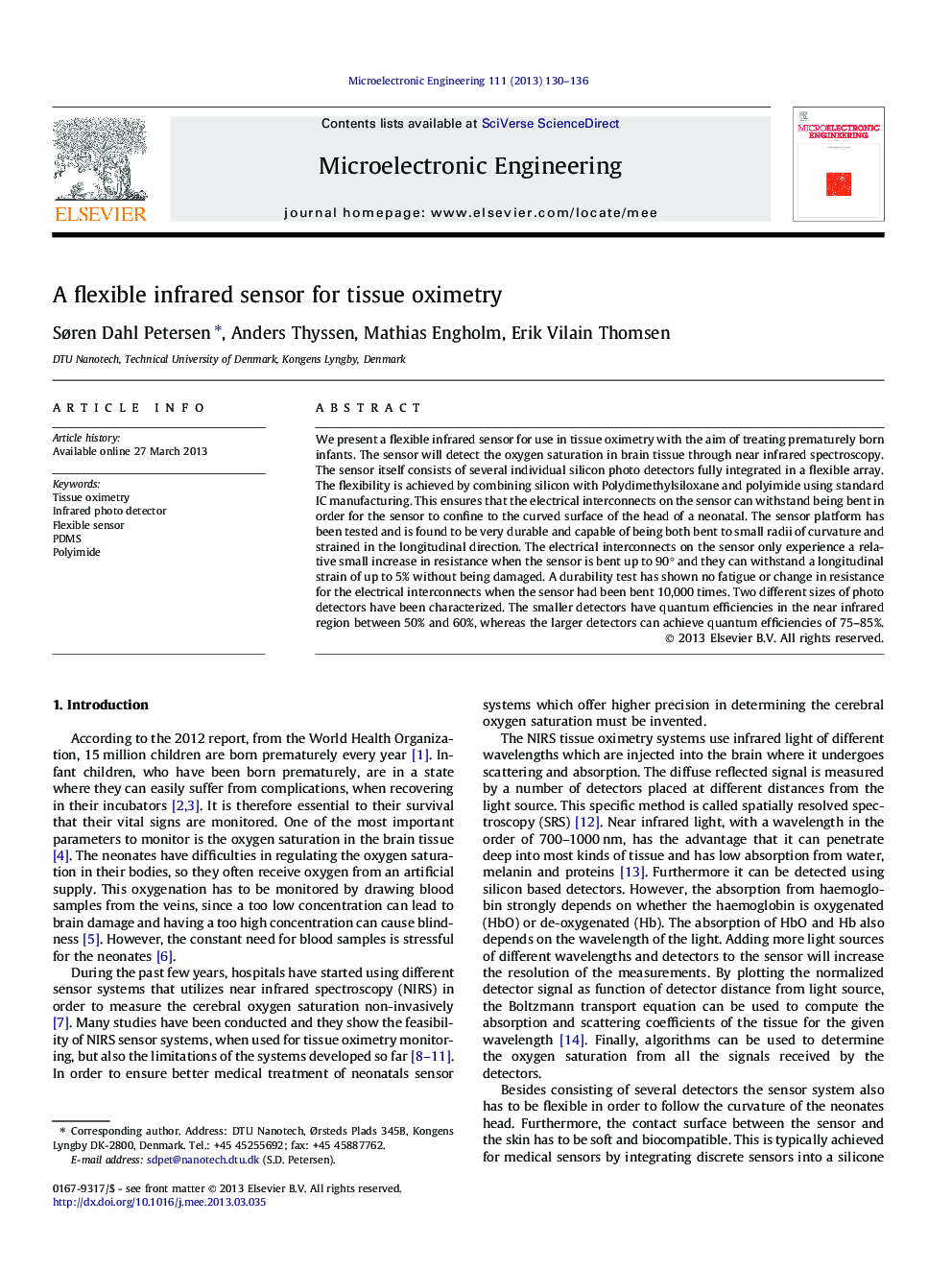| Article ID | Journal | Published Year | Pages | File Type |
|---|---|---|---|---|
| 539968 | Microelectronic Engineering | 2013 | 7 Pages |
•We present a flexible array of silicon IR detectors for tissue oximetry.•The sensor array is fabricated from silicon, PDMS and polyimide.•The sensor can be bent and stretched while maintaining electrical conductivity.•The quantum efficiency of the sensor is up to 85%.
We present a flexible infrared sensor for use in tissue oximetry with the aim of treating prematurely born infants. The sensor will detect the oxygen saturation in brain tissue through near infrared spectroscopy. The sensor itself consists of several individual silicon photo detectors fully integrated in a flexible array. The flexibility is achieved by combining silicon with Polydimethylsiloxane and polyimide using standard IC manufacturing. This ensures that the electrical interconnects on the sensor can withstand being bent in order for the sensor to confine to the curved surface of the head of a neonatal. The sensor platform has been tested and is found to be very durable and capable of being both bent to small radii of curvature and strained in the longitudinal direction. The electrical interconnects on the sensor only experience a relative small increase in resistance when the sensor is bent up to 90° and they can withstand a longitudinal strain of up to 5% without being damaged. A durability test has shown no fatigue or change in resistance for the electrical interconnects when the sensor had been bent 10,000 times. Two different sizes of photo detectors have been characterized. The smaller detectors have quantum efficiencies in the near infrared region between 50% and 60%, whereas the larger detectors can achieve quantum efficiencies of 75–85%.
Graphical abstractFigure optionsDownload full-size imageDownload as PowerPoint slide
